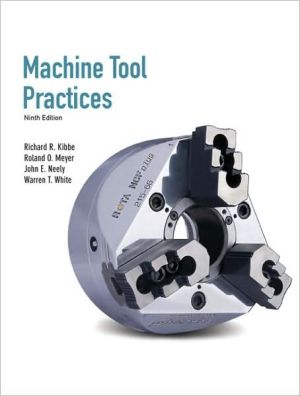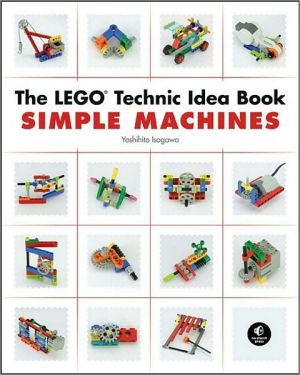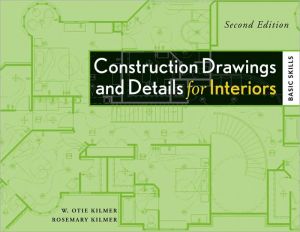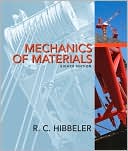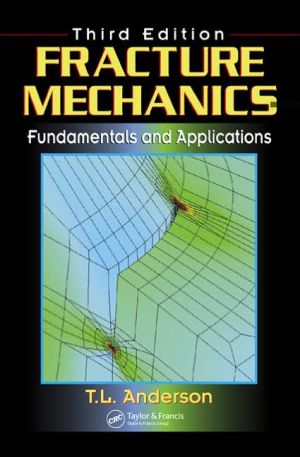Machine Tool Practices
“Machine Tool Practices, 9e, effectively provides a concise overview of machine tools and related methods and practices that are found in a number of different industry types that utilize various machining processes. The style of writing and illustrating, combined with the authors’ practical experience and knowledge, has yielded a text that can be read and understood by engineers and technicians alike.”\ Murray Therrell, Industrial Mechanical Systems Instructor, Arkansas Northeastern...
Search in google:
This classic book features a richly illustrated, intensely visual treatment of basic machine tool technology and related subjects, including measurement and tools, reading drawings, mechanical hardware, hand tools, metallurgy, and the essentials of CNC. Covering introductory through advanced topics, Machine Tool Practices is formatted so that it may be used in a traditional lab-lecture program or a self-paced program. The book is divided into major sections that contain many instructional units. Each unit contains listed objectives, self tests with answers, and boxed material covering shop tips, safety, and new technologies. In this updated edition there are over 600 new photos and 1,500 revised line drawings! Booknews New edition of a text for students training to be machinists either through apprenticeship, vocational schools, or community college programs. Dense with information, illustrations, and self tests (with answers). No bibliography. Annotation c. Book News, Inc., Portland, OR (booknews.com)
SECTION AIntroductionUnit 1 Shop SafetyUnit 2 Mechanical HardwareUnit 3 Reading DrawingsSECTION BHand ToolsUnit 1 Arbor and Shop PressesUnit 2 Work-Holding and Hand ToolsUnit 3 HacksawsUnit 4 FilesUnit 5 Hand ReamersUnit 6 Identification and Uses of TapsUnit 7 Tapping ProceduresUnit 8 Thread-Cutting Dies and Their UsesUnit 9 Off-Hand GrindingSECTION CDimensional Measurement Unit 1 Systems of MeasurementUnit 2 Using Steel RulesUnit 3 Using Vernier, Dial, and Digital Instruments for Direct MeasurementsUnit 4 Using Micrometer InstrumentsUnit 5 Using Comparison Measuring InstrumentsUnit 6 Using Gage BlocksUnit 7 Using Angular Measuring InstrumentsUnit 8 Tolerances, Fits, Geometric Dimensions, and Statistical Process ControlSECTION DMaterialsUnit 1 Selection and Identification of SteelsUnit 2 Selection and Identification of Nonferrous MetalsUnit 3 Hardening, Case Hardening, and TemperingUnit 4 Annealing, Normalizing, and Stress RelievingUnit 5 Rockwell and Brinell Hardness TestersSECTION ELayoutUnit 1 Basic Semiprecision Layout PracticeUnit 2 Basic Precision Layout PracticeSECTION FPreparation for Machining OperationsUnit 1 Machinability and Chip FormationUnit 2 Speeds and Feeds for Machine ToolsUnit 3 Cutting FluidsUnit 4 Using Carbides and Other Tool MaterialsSECTION GSawing MachinesUnit 1 Using Reciprocating and Horizontal Band Cutoff MachinesUnit 2 Abrasive and Cold SawsUnit 3 Preparing to Use the Vertical Band MachineUnit 4 Using the Vertical Band MachineSECTION HDrilling MachinesUnit 1 The Drill PressUnit 2 Drilling ToolsUnit 3 Hand Grinding of Drills on the Pedestal GrinderUnit 4 Operating Drilling MachinesUnit 5 Countersinking and CounterboringUnit 6 Reaming in the Drill PressSECTION ITurning MachinesUnit 1 The Engine LatheUnit 2 Toolholders and Toolholding for the LatheUnit 3 Cutting Tools for the LatheUnit 4 Lathe Spindle ToolingUnit 5 Operating the Machine ControlsUnit 6 Facing and Center DrillingUnit 7 Turning between CentersUnit 8 Alignment of the Lathe CentersUnit 9 Other Lathe OperationsUnit 10 Sixty-Degree Thread Information and CalculationsUnit 11 Cutting Unified External ThreadsUnit 12 Cutting Unified Internal ThreadsUnit 13 Cutting TapersUnit 14 Using Steady and Follower RestsUnit 15 Additional Thread FormsUnit 16 Cutting Acme Threads on the LatheSECTION JVertical Milling MachinesUnit 1 Vertical Spindle Milling MachinesUnit 2 Cutting Tools and Cutter Holders for the Vertical Milling MachineUnit 3 Setups on the Vertical Milling MachineUnit 4 Vertical Milling Machine OperationsUnit 5 Using the Offset Boring HeadSECTION KHorizontal Spindle Milling MachinesUnit 1 Horizontal Spindle Milling MachinesUnit 2 Types of Spindles, Arbors, and AdaptersUnit 3 Arbor-Driven Milling CuttersUnit 4 Work-Holding Methods and Standard SetupsUnit 5 Machine Setup and Plain MillingUnit 6 Using Side Milling CuttersUnit 7 Using Face Milling Cutters on the Horizontal Milling MachineSECTION LGrinding and Abrasive Machining ProcessesUnit 1 Selection and Identification of Grinding WheelsUnit 2 Truing, Dressing, and Balancing of Grinding WheelsUnit 3 Grinding FluidsUnit 4 Horizontal Spindle Reciprocating Table Surface GrindersUnit 5 Work Holding on the Surface GrinderUnit 6 Using the Surface GrinderUnit 7 Problems and Solutions in Surface GrindingUnit 8 Center-Type Cylindrical GrindersUnit 9 Using the Cylindrical GrinderUnit 10 Universal Tool and Cutter GrinderSECTION MComputer Numerical Control and Other Advanced Machining ProcessesUnit 1 CNC Machine Tool Programmable Axes and Position Dimensioning SystemsUnit 2 CNC ProgrammingUnit 3 CNC ToolingUnit 4 Other Advanced Machining ProcessesAppendix 1 Answers to Self-TestsAppendix 2 General TablesTable 1 Decimal Equivalents of Fractional InchesTable 2 Inch/Metric Conversion TableTable 3 Tap Drill SizesTable 4 Metric Tap Drill SizesTable 5A TapersTable 5B Tapers and AnglesTable 6 General MeasurementsTable 7A Density or Specific Gravity of Metals and AlloysTable 7B Approximate Melting Points of Metals and Various SubstancesTable 8 Right-Triangle Solution FormulasTable 9 Wire Gages and Metric EquivalentsTable 10 Cutting Speeds for Commonly Used MaterialsTable 10A Feeds for High-Speed Steel End MillsTable 10B Coolants and Cutting Oils Used for General Machining
\ BooknewsNew edition of a text for students training to be machinists either through apprenticeship, vocational schools, or community college programs. Dense with information, illustrations, and self tests (with answers). No bibliography. Annotation c. Book News, Inc., Portland, OR (booknews.com)\ \
